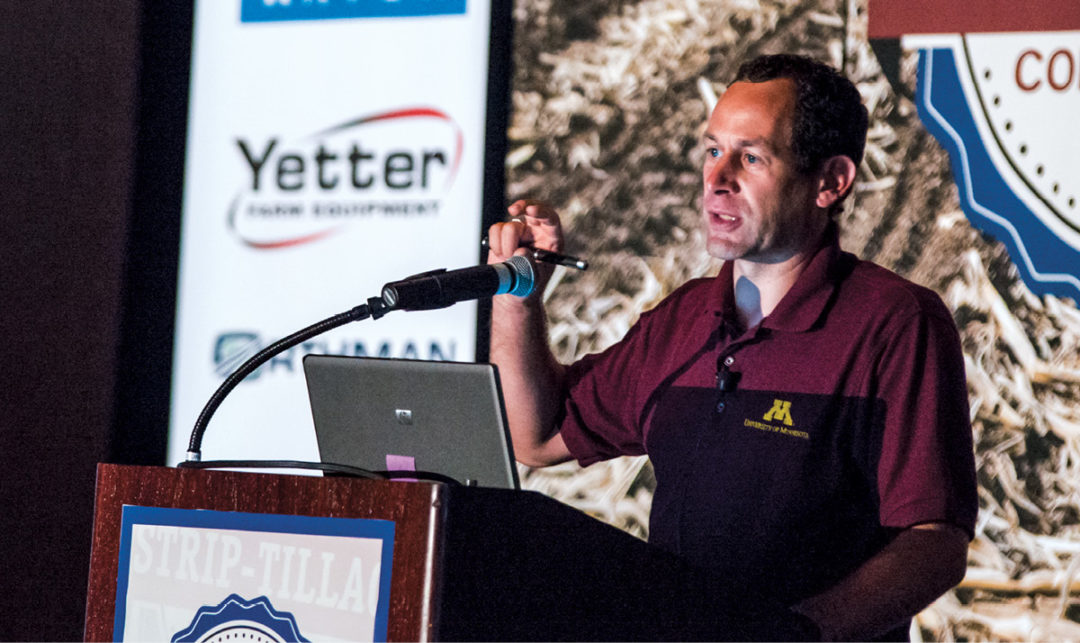No-Till Farmer
Get full access NOW to the most comprehensive, powerful and easy-to-use online resource for no-tillage practices. Just one good idea will pay for your subscription hundreds of times over.

SHARING INSIGHT. University of Minnesota nutrient management specialist Fabian Fernandez shares findings from his extensive side-by-side comparisons of fertility practices in no-tilled and strip-tilled fields during the 2nd annual National Strip-Tillage Conference held last August in Iowa City, Iowa.
“I’m putting all my nutrients right in the root zone,” seems to be the most popular refrain among strip-tillers as they ponder the benefits of the practice.
On its face, this is a well-reasoned assumption, but proving that banding nutrients is the superior strategy turns out to be difficult work.
University of Minnesota nutrient management specialist Fabian Fernandez’s current research has focused on nutrient management in corn and soybean rotations. Over the past 5 years he’s collected data from a series of university-funded studies that took place on research plots and affiliated commercial farms in Urbana and Pesotum, Ill.
Across these studies, he’s taken strip-till and no-till systems paired with both banding and broadcasting nutrient application methods to find out how much of a difference placement — specifically with phosphorus (P) and potassium (K) — truly makes to nutrient uptake by crops.
In review of his research, Fernandez says the difference nutrient placement makes to crops seems to be negligible — but the tillage method that’s used seems to have larger effect on nutrient uptake. His research indicates that although the majority of P and K uptake occurs in the top layers of the soil, strip-tillage creates conditions in which crops’ roots absorb those nutrients most efficiently.

|
| TAKING IT |